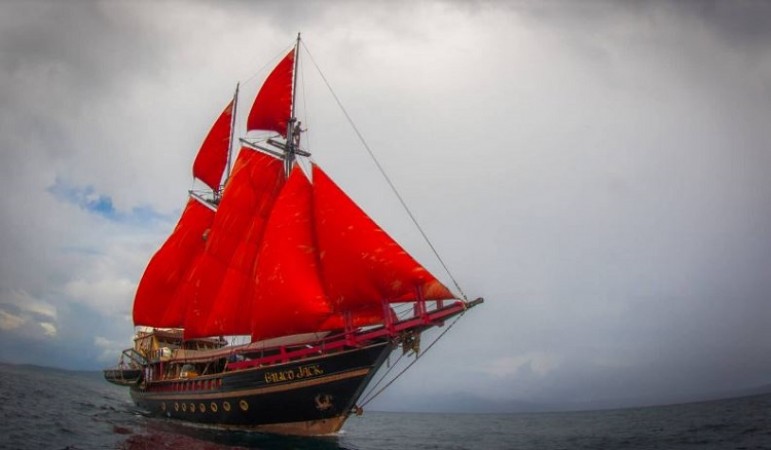
On December 7, 2017, the art of Phinisi boat-making gained recognition and was inscribed onto UNESCO's Intangible Cultural Heritage list. This significant acknowledgment took place during the 12th session of the Unique Cultural Heritage Committee, marking an official step to honor and safeguard this iconic craftsmanship from Indonesia.
The Pinisi: South Sulawesi's Exemplary Art of Boatbuilding
In the annals of maritime history, few vessels hold the distinction and cultural significance of the Pinisi, the proud creation of South Sulawesi, Indonesia. On a remarkable day in 2017, the Pinisi achieved international recognition, earning a revered place on UNESCO's prestigious Intangible Cultural Heritage of Humanity list. This momentous acknowledgment solidified its status as an emblem of South Sulawesi's unparalleled art of boatbuilding.
The Pinisi stands as a testament to the intricate craftsmanship, heritage, and the seafaring prowess of the Bugis and Makassar people, who have long been the custodians of this maritime tradition. Its roots trace back centuries, embedded within the maritime culture that has defined the coastal regions of Indonesia, particularly South Sulawesi.
What distinguishes the Pinisi from other vessels is not merely its robust structure or impressive size, but the meticulous artistry involved in its construction. Traditionally crafted entirely by hand, skilled artisans meticulously carve and assemble these majestic wooden ships, employing techniques passed down through generations.
The process begins with the selection of sturdy tropical hardwood, often sourced from species like teak, ironwood, and various indigenous trees. Master shipbuilders meticulously shape and carve these timbers, using age-old methods without the aid of modern machinery. The construction of the hull, meticulously fitted planks, and precisely woven fiber lashings constitute the essence of this art form.
A significant aspect of the Pinisi's design is its adaptability to the diverse purposes it serves. Historically, these vessels were primarily employed as merchant ships, facilitating the spice trade between the Indonesian archipelago and distant lands. With their distinctive twin masts and triangular sails, they plied the seas, carrying spices, timber, and other commodities, contributing to Indonesia's rich maritime heritage.
Beyond their utilitarian function, Pinisi boats are revered for their cultural significance. These vessels encapsulate the spiritual beliefs, rituals, and communal values of the Bugis and Makassar people. The process of crafting a Pinisi is often accompanied by ceremonial practices, invoking blessings for safe voyages and auspicious journeys.
The inclusion of the Pinisi on UNESCO's Intangible Cultural Heritage list has garnered global attention, shining a spotlight on the invaluable cultural heritage of South Sulawesi. This recognition has not only preserved the legacy of this exceptional craft but has also bolstered efforts to safeguard the traditional knowledge and skills intrinsic to Pinisi boatbuilding.
However, despite this acclaim, the future of the Pinisi faces challenges. Modernization and changing economic landscapes have led to a decline in traditional boatbuilding practices. Efforts to preserve this heritage involve initiatives aimed at promoting awareness, supporting artisans, and fostering cultural pride among younger generations.
The Pinisi stands as a poignant reminder of the intersection between tradition and innovation, encapsulating the spirit of resilience and cultural identity. As it continues to navigate the tides of time, the Pinisi remains a testament to the enduring legacy of South Sulawesi's art of boatbuilding, transcending its wooden frame to symbolize a heritage cherished by humanity.